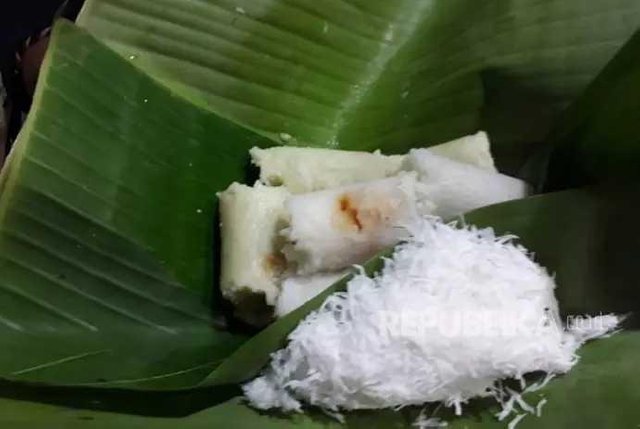Spreads Traditional White Cake History

Indonesia is known to have many traditional cakes scattered throughout the region in the region. Some of them are still known by the younger generation but others are hard to find.
Puthu can be a traditional cake that is rather difficult to find in some areas today. This is what happens in the city of Malang which in fact can be counted fingers how many stalls that peddle this. Yet this cake has its own historical value in Indonesian culture, even Asia.
Historical Activist in Exploring the Traces of Malang (JJM), Mochammad Antik (37) explains, the history of cakes putu actually can be found in the "China Silk Museum". Along with serving longjin tea, this cake is considered to have existed since 1200 years ago, namely in the Ming Dynasty. Puthu was originally known as XianRoe Xiao Long which means a cake of rice flour containing very soft green beans steamed in bamboo mold.
"And if in Indonesia known as puthu," said Antik when met at his residence in Malang, Sunday (11/2).
In Indonesia, Antik says, the name puthu appears in the old literary script, Serat Centhini, written in 1814 in the Mataram kingdom. In the manuscript, the incidence of mention of puthu is taken around 1630 in Wanamarta Village, East Java (East Java). This village is most likely to be in Probolinggo when seen from the route of the manuscript storymaker, Syekh Amongraga and Tambangraras.
In the script, the word puthu appears when Ki Baby Panurta asks his santr to provide the morning dish. Of these dishes there are fried rice, rice rames, rice cone with fish side dish of betutu and goat. As for the drink there are sherbet and coffee while its side food, pancake and puthu.
The mention of puthu also appeared in another event with a similar location, Wanamarta Village. In the centhini script mentioned Nyai Daya and Nyai Sumbaling are preparing a snack after dawn prayer. In the dish is served gemblong, ulen-ulen, plate, pancake, puthu, jadah, jenang, beef jerky, jeruk gepuk, banana grilled, kupat, balendrang, grendul jenang, plantain and wedang powder.
"From these two incidents, it is interesting that they can be drawn in. The puthu cake always seems to be served in the morning, as if it were breakfast, morning snacks or perhaps appetizers," he explained.
While the coming influence of Puthu to Indonesia, Antik argues, this is likely to happen when China comes to Indonesia. This condition occurs around the early period of the development of Islam or the decline of Majapahit Kingdom. More precisely occurred around 1368 to 1600s.
In those days, Antik said, Chinese people from Admiral Cheng Ho began to spread Islam in the country. As is known, there is not only the influence of religion there but also the acculturation of culture. In other words, the influence of puthu along with other Chinese culinary emerged in that era.
Puthu in the Ming Dynasty is known for its green bean stuffing while in Indonesia it is more on brown sugar. According to Antik, this change could be due to adjust to the situation in the field. "In the past, brown sugar is more easily sought than green bean raw materials, especially because our red sugar is abundant at that time," he explained.
In addition to ordinary puthu, Antik explains, there is also a puthu bat cake in the community today. According to him, the presence of this type is likely only a variant to adjust the market. However, when viewed in terms of age, puthu can usually be called the oldest of the two.
Hi @ladisgamers, good job!
Congratulations @ladisgamers! You have completed some achievement on Steemit and have been rewarded with new badge(s) :
Click on any badge to view your own Board of Honor on SteemitBoard.
For more information about SteemitBoard, click here
If you no longer want to receive notifications, reply to this comment with the word
STOP